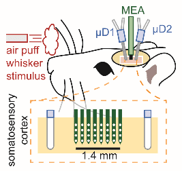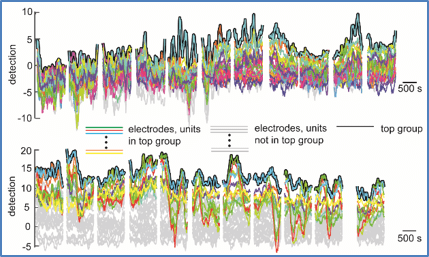Combining Microdialysis and Electrophysiology in Cerebral Cortex to Delineate Functional Implications of Acetylcholine Gradients
Student: Tazima Nur
Degree: Ph.D., May 2018
Major Professor: Dr. Woodrow Shew
Research Area(s):
Biological Materials & Processes
Background/Relevance
- Neural response changes from trial to trial for repeated sensory stimulus.
- Cholinergic neuromodulation induces cortical state change.
- Hypothesis cortical state is heterogeneous across the spatialextent of the cortical network and this heterogeneity enablesthe cortical network to maintain reliable sensory detection.
Innovation
- A novel combination of microelectrode array (MEA) and microdialysis ( µD) probes for precision chemical and electrophysiological measurements.
Approach
- Implant the device in rat brain.
- Control ACh concentration via µD probes.
- Measure the neural activity in terms of action potentials via MEA in response to whisker simulation under varying chemical conditions.




Conclusions
- Cortical state is spatially inhomogeneous across the cortical network.
- Changes in ACh spatial distribution pattern lead to different cortical states at different locations in the cortical network.
- The heterogeneity in cortical state allowed for reliable population level detection despite unreliable detection at the level of single electrodes.
